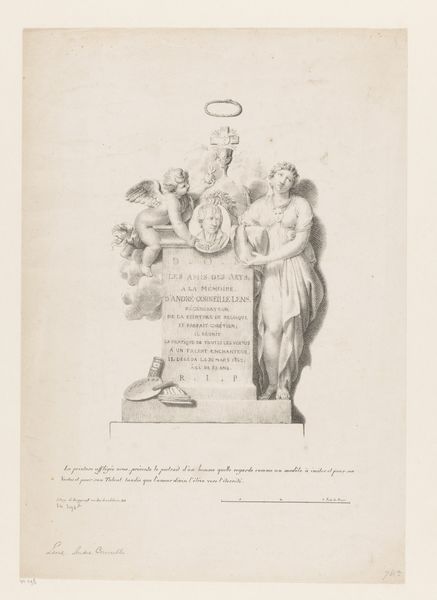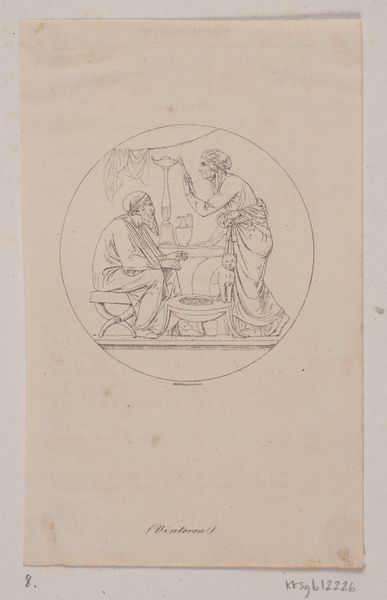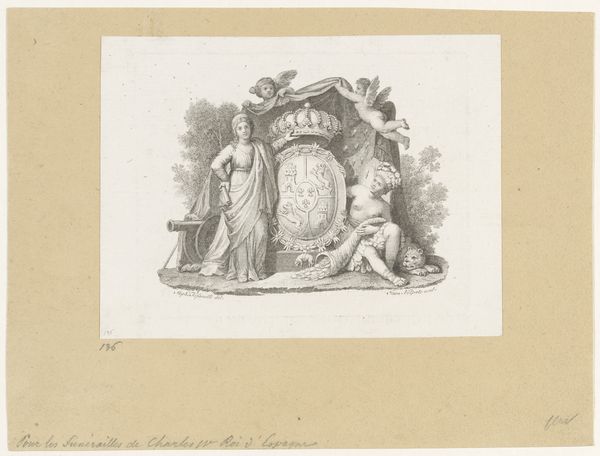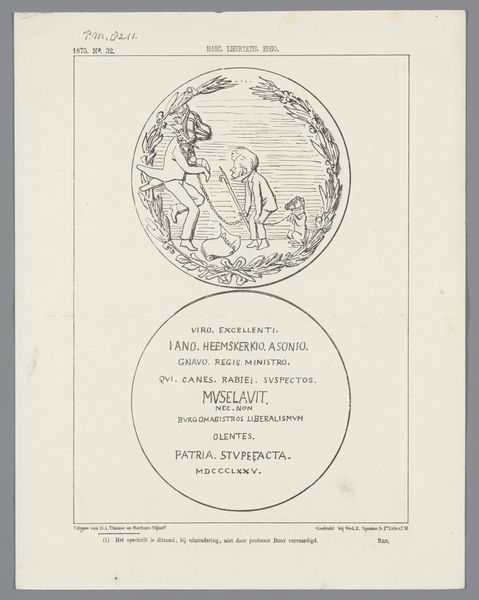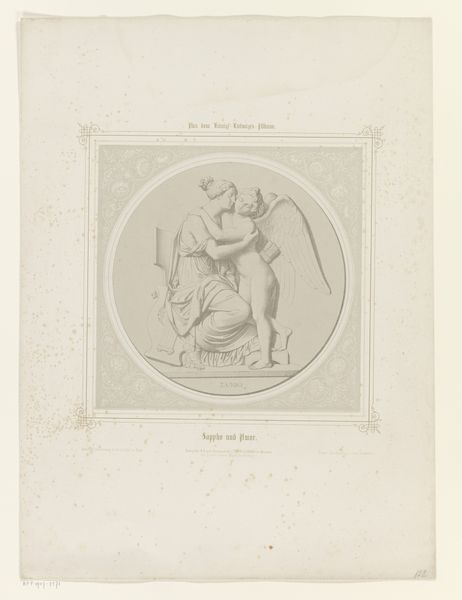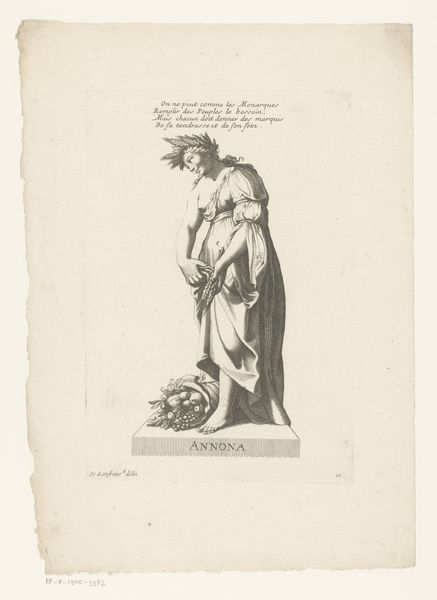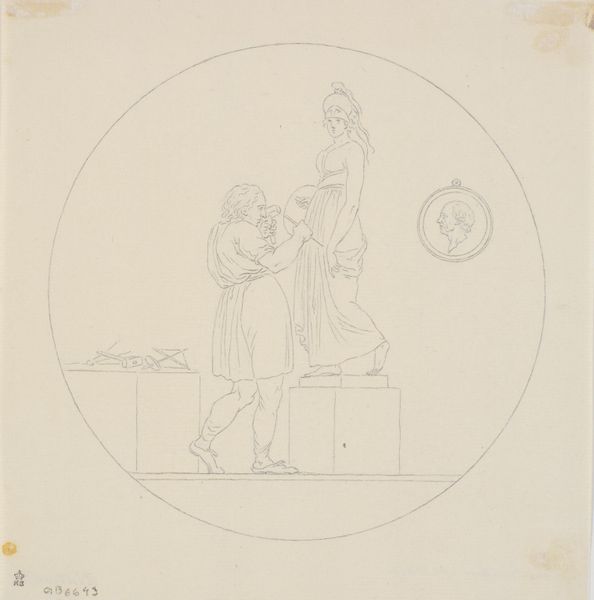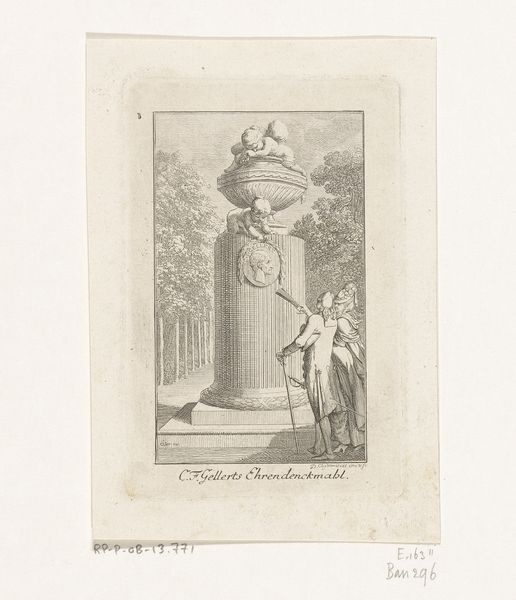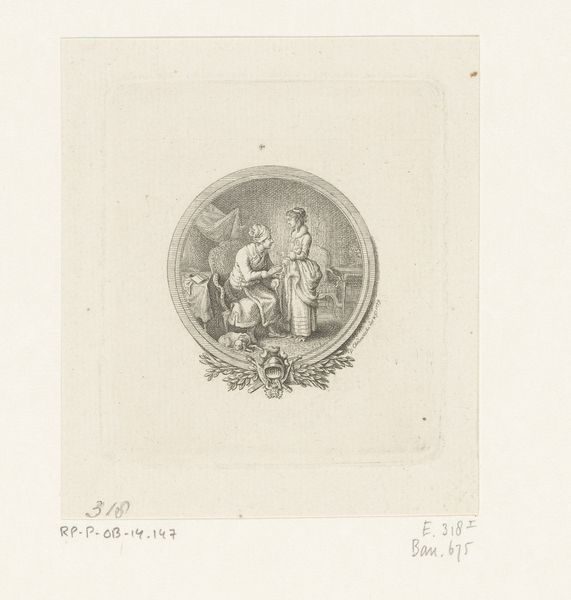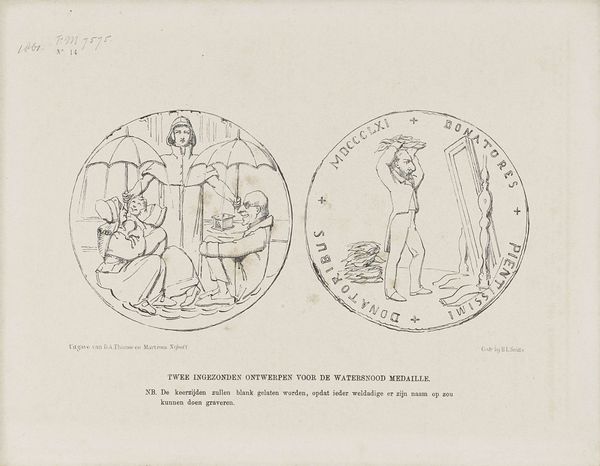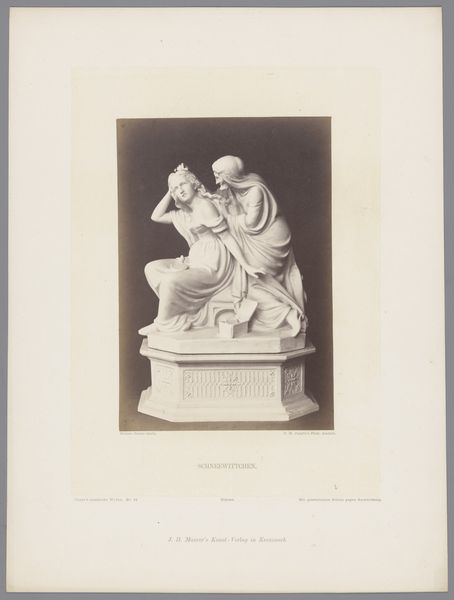
Spotprent op de vereniging van de ministeries van Erediensten, Justitie en Buitenlandse Zaken, 1862 1862
0:00
0:00
drawing, print, ink, engraving
#
portrait
#
drawing
#
allegory
# print
#
ink
#
classicism
#
history-painting
#
engraving
Dimensions: height 215 mm, width 275 mm
Copyright: Rijks Museum: Open Domain
Curator: This print, dating back to 1862, is titled "Spotprent op de vereniging van de ministeries van Erediensten, Justitie en Buitenlandse Zaken, 1862," created by Johan Michaël Schmidt Crans. It’s an engraving. What's your initial take? Editor: Austere. The monochromatic palette and the stylized figure evoke a sense of classical formality, almost like an emblem on ancient currency. Curator: Absolutely. The artist's choice of engraving speaks to its function— likely intended for mass reproduction. It's a commentary on the merger of ministries: Religious Affairs, Justice, and Foreign Affairs. This unification represents a specific power dynamic in the Dutch socio-political landscape. The reference to "model of a commemorative coin" tells us that its value lies not as "art" but in what it signifies and circulates. Editor: True. Technically, look at the engraver's command of line. The figure of Justice, with her scales and the blindfold resting atop her head, has this powerful verticality, almost rigidly structural. Then we have these textural subtleties rendered by the hatching and cross-hatching giving depth to her robes, imbuing the allegorical figure with palpable weight. It all feels incredibly intentional and poised. Curator: Right, notice Justice's spear— labelled “Justitie” itself. A literal visual declaration of the tool with which justice is done! And adjacent to Justice is this strange ornamented pillar adorned with text – KERKL. REGLEMENT or, "Church Regulations," a fascinating element in its visual alignment to her. I read this union with Justice as a pointed comment on the alignment between state power and religious institutions. Editor: Yes, it feels symbolic, but rather critical. Given the date, in the mid-19th century, the themes it evokes align it with classical ideals that informed similar allegorical artworks found across Europe, specifically regarding civic order and the concept of justice. Its clean lines emphasize clarity; perhaps a commentary on these social structures. Curator: An astute point about clarity, it highlights how these ministries sought to present their actions, a claim for reason amidst inevitable social and political chaos. The making of an easily circulated and reproduced object demonstrates its usefulness within Dutch civic discourse. Editor: This has definitely helped refine my initial observation. Looking closer at Johan Michaël Schmidt Crans' rendering now, it moves beyond a static, symbolic piece. Curator: Agreed. The process by which these objects are made, who profits from the message it produces, tells us about Dutch society and its systems.
Comments
No comments
Be the first to comment and join the conversation on the ultimate creative platform.
